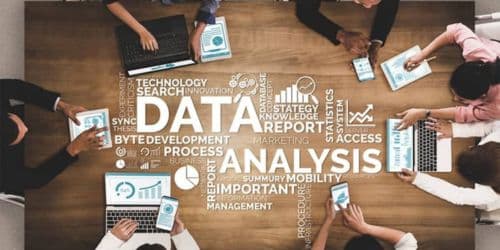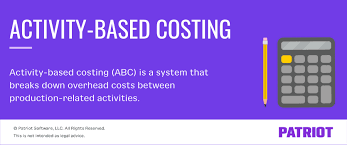Data analysis is an important process that involves reviewing, interpreting, and deriving relevant insights from large amounts of data. We’ve got you covered if you’re looking for a data analysis job, polishing your data analysis skills, or employing data analysis tools to get a competitive edge in your area. You may become a significant asset to any organization seeking to harness the potential of data-driven decision-making by having a solid foundation in data analysis and remaining up to date on the newest tools and methodologies. Join us as we delve into the world of data analysis and equip you with the information and tools you need to flourish in this dynamic and influential industry.
What Is Data Analysis
The process of reviewing, cleaning, converting, and interpreting data in order to extract important insights and information is known as data analysis. It entails using various statistical and computational tools to huge datasets in order to discover patterns, trends, and linkages. Data analysis is critical in decision-making, problem-solving, and identifying areas for development in many disciplines, including business, research, finance, and healthcare. With the rising availability of data and technological improvements, data analysis has become a necessary skill for professionals in order to draw relevant conclusions and make data-driven decisions.
What Is Data Analysis Job
A data analysis job is a critical role in modern businesses. It revolves around extracting valuable insights from vast amounts of data, which companies accumulate daily. By employing statistical techniques and computational tools, data analysts make sense of this data, transforming it into actionable knowledge.
The first step in data analysis involves data cleaning and preparation, ensuring that the information is accurate and usable. Transitioning to the next phase, analysts use a variety of statistical techniques to explore the data, identify patterns, and detect trends. They might also apply machine learning algorithms to uncover hidden relationships within the data.
After gaining a deeper understanding of the data, analysts create visualizations to present their findings effectively. These visual representations can range from charts and graphs to interactive dashboards, making complex information more accessible to stakeholders and decision-makers.
The final crucial aspect of the data analysis job is the interpretation of results. Analysts translate their findings into actionable insights, helping businesses make informed decisions and improve their performance. Effective communication skills are vital, as data analysts must present their discoveries to non-technical audiences, explaining complex concepts in simple terms.
What Is Data Analysis Skills
Data analysis skills encompass a range of abilities necessary to interpret, manipulate, and derive insights from data. These skills involve statistical knowledge, programming proficiency, and critical thinking. Data analysts must be proficient in using tools such as Excel, Python, or R to clean and analyze data. Additionally, they should possess strong problem-solving capabilities, enabling them to tackle complex datasets effectively. Furthermore, data visualization skills play a crucial role in presenting findings in a clear and compelling manner. These skills are essential in various industries, enabling professionals to make data-driven decisions and drive organizational success.
What Is Data Analysis Tools
Data analysis tools are software or applications used to manipulate, process, and analyze data efficiently. These tools range from spreadsheet programs like Microsoft Excel to more advanced programming languages such as Python and R. Transitioning to specialized software like Tableau or Power BI, data analysts can create interactive visualizations and dashboards. Additionally, database management systems like SQL are vital for querying and managing large datasets. Data analysis tools streamline the analytical process and empower professionals to gain valuable insights from raw data effectively.
What Do Data Analysts Do?
Data analysts gather and clean data, then employ statistical methods to explore patterns and trends. Transitioning to the next step, they create visualizations to present findings effectively. Additionally, analysts interpret results and communicate actionable insights to stakeholders, helping organizations make informed decisions. Their role spans across industries, from finance to healthcare, driving data-driven strategies.
Read: DATA ANALYST: Overview, Salary, Job, Resume & All You Need
Is Data Analyst an IT Job?
Yes, a data analyst is considered an IT job, which has grown in response to the growing importance of data in various industries. Transitioning from traditional IT roles, data analysts now also play a crucial role in the digital age, where data-driven insights drive decision-making and business strategies.
In this profession, data analysts utilize programming languages like Python, R, or SQL to extract, clean, and manipulate large datasets efficiently. In the following stage, they use statistical approaches and data mining techniques to find patterns, correlations, and trends in the data.
The insights derived from data analysis are invaluable to businesses, as they aid in understanding customer behavior, identifying market trends, and also optimizing processes for improved efficiency. Moreover, data analysts are often responsible for creating interactive visualizations and dashboards, presenting complex information in a clear and compelling manner to stakeholders and decision-makers.
As technology continues to advance and data becomes more abundant, the demand for skilled data analysts is on the rise. These professionals bridge the gap between raw data and actionable knowledge, making data analysis a critical component of successful businesses in the digital era.
What Is Data Analysis and Examples?
Data analysis is the process of examining, interpreting, and drawing insights from data. It also involves using statistical methods to explore patterns and trends. For example, in finance, data analysts may analyze stock market data to identify investment opportunities. In marketing, they might analyze customer data to understand consumer behavior and target specific demographics. Data accounting is also prevalent in healthcare, where analysts may examine patient data to identify disease patterns and improve treatment outcomes. These examples illustrate how this analysis can also be applied across various industries, influencing decision-making and organizational success.
Read: SALARY OF DATA ANALYST: How Much They Make 2023
How to Learn Data Analysis?
Learning data analysis involves a step-by-step process that builds a solid foundation in the field. To begin, aspiring data analysts should also acquire knowledge of foundational statistics and programming languages like Python or R. These languages are widely used in data analysis due to their versatility and extensive libraries for data manipulation and visualization.
Practical application is crucial in the learning process. To transition from theory to practice, one can also start by working with real datasets. For example, analyzing sales data to identify trends, exploring social media data to understand user behavior, or examining health records to derive insights into disease patterns.
Participating in online tutorials, courses, and workshops can supplement self-learning. Additionally, joining data analysis competitions, like those on platforms like Kaggle, provides opportunities to solve real-world problems and engage with the data science community.
Collaboration on data analysis projects with others can also offer valuable experience. Working as part of a team, individuals can also, learn from each other’s approaches and gain exposure to different perspectives and techniques.
Continuous practice is essential for skill development. However, aspiring data analysts should explore diverse datasets from various industries, delving into different data types and complexities. By confronting various challenges, learners develop the ability to adapt their analytical techniques to different situations effectively.
In summary, learning data accounting involves a combination of theory, practice, collaboration, and continuous improvement. By following this multifaceted approach, individuals can cultivate valuable data accounting skills, enabling them to excel in this rapidly expanding field.
Does Data Analyst Require Coding?
Yes, data analysts typically require coding skills. However, transitioning from data collection to analysis, coding is used for data manipulation and statistical accounting. Python and R are common coding languages also used in data accounting. The ability to write and understand code empowers analysts to efficiently clean and transform data, apply statistical techniques, and also create visualizations. These coding skills are, however, essential for data analysts to derive insights and make data-driven decisions effectively.
Read: DATA ANALYST TOOLS: 13+ Best Data Analyst Tools 2023
What Are the 10 Types of Data Analysis?
There are various types of data analysis that serve different purposes in extracting insights from data. Transitioning from descriptive analyses, these methods include:
- Descriptive Analysis: Summarizing and describing data.
- Diagnostic Analysis: Identifying reasons behind observed patterns.
- Exploratory Analysis: Uncovering trends and relationships within data.
- Predictive Analysis: Forecasting future outcomes based on historical data.
- Prescriptive Analysis: Recommending actions to achieve desired outcomes.
- Inferential Analysis: Drawing conclusions and making inferences from a sample to a population.
- Time Series Analysis: Analyzing data with a temporal dimension to identify patterns over time.
- Spatial Analysis: Studying geographical data and patterns.
- Text Analysis: Extracting insights from unstructured textual data.
- Sentiment Analysis: Evaluating emotions and opinions expressed in text data.
Each of these types also plays a crucial role in understanding data from different angles and is valuable in decision-making processes across various industries.
FAQs
What are the data analysis methods?
The two main approaches to data analysis are qualitative data techniques and quantitative data accounting techniques. These data analysis methodologies can be used alone or together to help corporate executives and decision-makers get business insights from varied data.
What are the components of data analysis?
Data Analyzing entails gathering data requirements, collecting data, cleaning data, analyzing data, interpreting data, and visualizing data.
What is the difference between data collection and data analytics?
The process of gathering relevant information from primary or secondary sources and storing it in the proper manner is known as data collecting. After data collection, data analytics examines controlled data for quality.
Related Articles
- 2023 TOP MARKET RESEARCH COMPANIES.
- Pattern Day Trader: Definition, Rules, How to Remove Status & Guide
- DIAMOND PATTERN: Understanding the Diamond Chart Pattern(+Quick Guide)






